Understanding Modern Laser Therapies for Pigmentation
Pigmentation disorders ranging from melasma and freckles to post-inflammatory hyperpigmentation (PIH) present ongoing treatment challenges, particularly in darker skin types. Intense Pulsed Light (IPL) and the Alexandrite 755 nm laser have garnered attention due to their distinct mechanisms and efficacy profiles. This narrative explores scientific and clinical data evaluating their roles, effectiveness, safety, and outcomes in pigment correction.
Fundamentals of IPL and Alexandrite 755 nm Laser Technologies in Pigment Correction
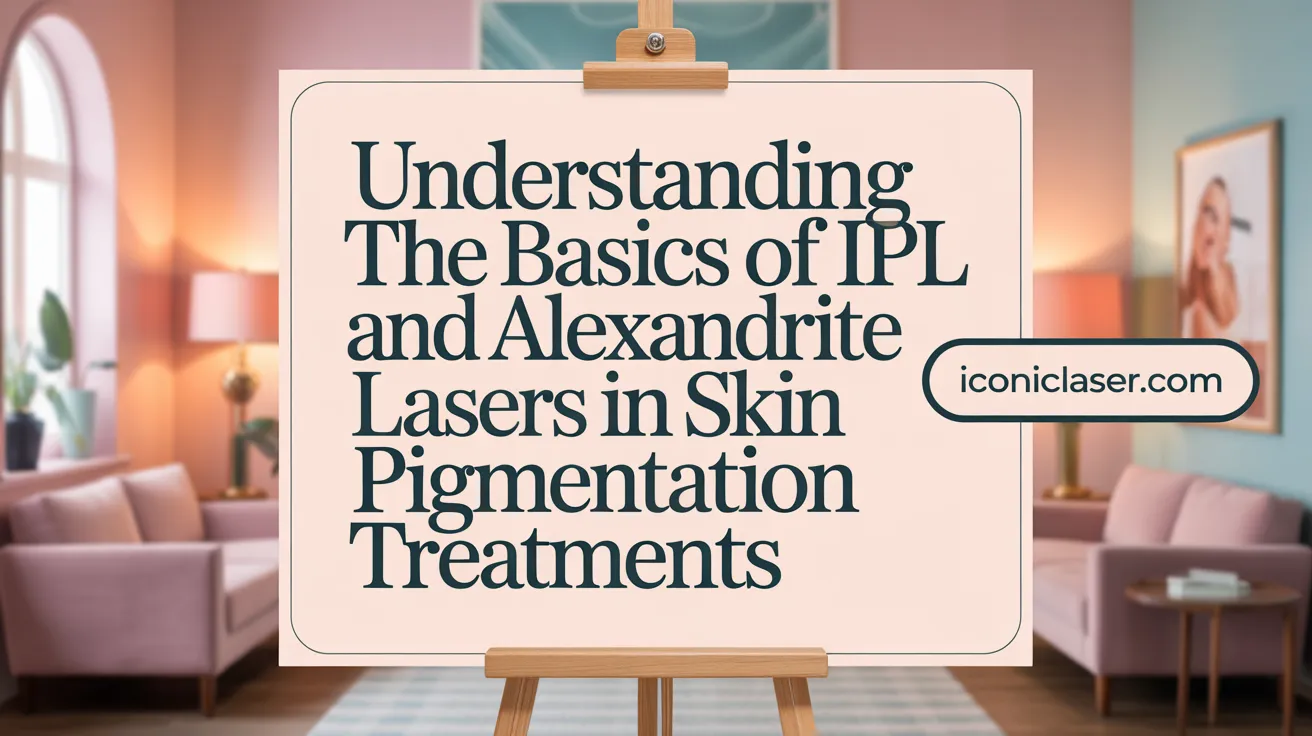
Does IPL laser treatment work for pigmentation?
Intense Pulsed Light (IPL) therapy has demonstrated effectiveness in treating various pigmented skin conditions. It employs broad-spectrum light that targets pigmented cells, delivering energy to break down melanin deposits. This process encourages the shedding of pigmented cells and stimulates collagen production, leading to an overall improvement in skin tone and appearance. Clinical studies show that a typical IPL treatment course of three to five sessions, spaced several weeks apart, results in significant pigmentation reduction. It is considered a safe, non-invasive option suitable for patients seeking gradual skin improvement with minimal downtime.
What is the 755nm Alexandrite laser used for in pigmentation treatment?
The Alexandrite 755 nm laser is a well-established device in dermatology, primarily used for targeting pigmented lesions and tattoo removal. It functions by producing photoacoustic effects—rapid, high-energy pulses that shatter melanin-rich tissues into smaller fragments. These fragments are more easily eliminated by the body's immune system. Specifically, the 755 nm wavelength is ideal for treating superficial pigmented lesions and certain tattoos, especially in skin types I to III. Besides pigmentation correction, this laser also stimulates collagen production, helping improve skin texture and elasticity.
Differences in light source and energy delivery
While IPL devices emit broad-spectrum light that covers a range of wavelengths, the Alexandrite laser emits a specific, monochromatic wavelength of 755 nm. This precise targeting allows for higher absorption by melanin, enhancing treatment efficacy and safety. Additionally, IPL delivers light in pulses that are typically longer and less focused, making it suitable for general skin conditions.
In contrast, the Alexandrite laser provides short, high-energy pulses that induce photoacoustic effects capable of fragmenting pigmented deposits with minimal thermal damage to surrounding tissues. This targeted approach results in fewer side effects and a quicker healing response.
Suitability for various skin types and pigmentation conditions
The choice between IPL and Alexandrite laser depends on the patient's skin type and the specific pigmentation issue. IPL is versatile and effective for lighter skin tones, including Fitzpatrick types I–III, but carries a slightly higher risk of pigmentation changes in darker skin types.
The Alexandrite 755 nm laser suits skin types I–III due to its precise melanin targeting and minimal risk of excessive thermal damage. It is particularly effective for superficial pigmented lesions such as age spots, freckles, and certain nevus types. For darker skin tones or deeper pigmented lesions, other modalities, like Nd:YAG lasers, may be preferable.
In clinical practice, combining these technologies based on individual patient needs—along with proper cooling, dosage, and post-treatment care—optimizes outcomes and minimizes adverse effects.
Clinical Efficacy of IPL in Treating Hyperpigmentation Conditions
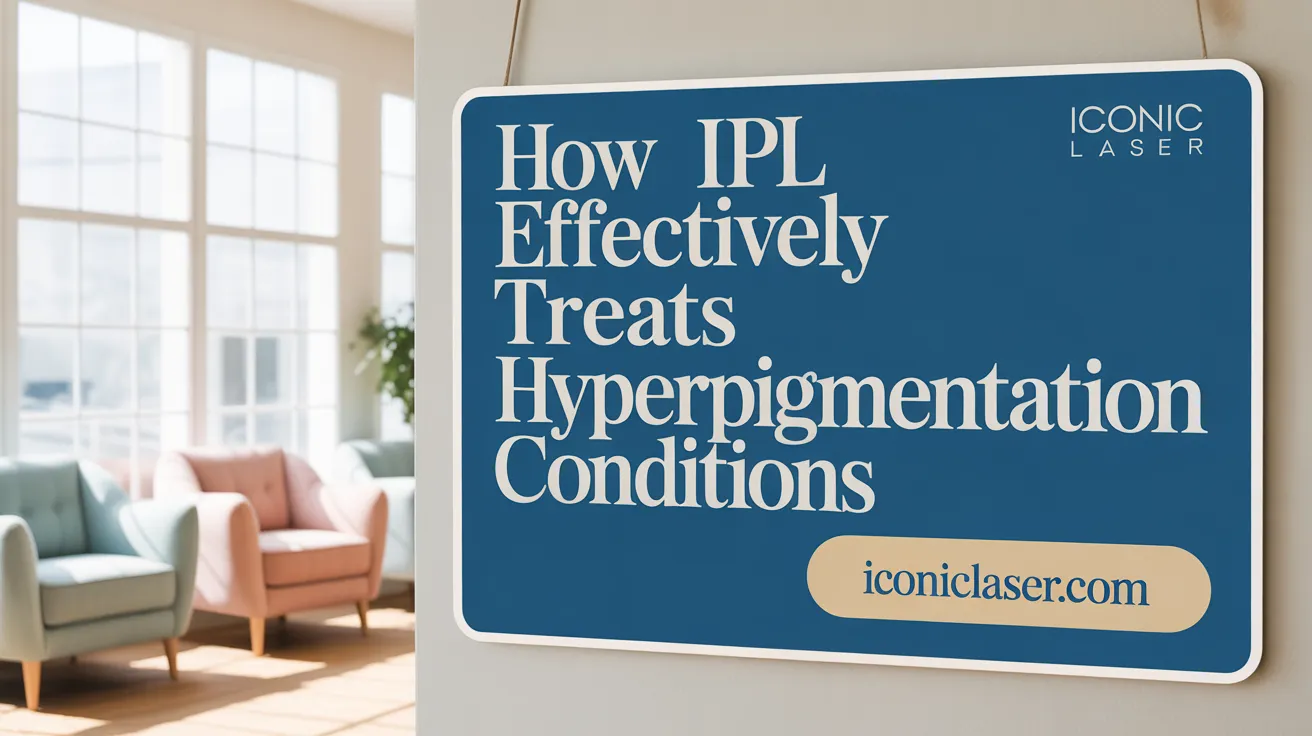
Does IPL laser treatment work for pigmentation?
IPL, or intense pulsed light therapy, has been used in managing various pigmentary conditions with varying degrees of success. Studies, including the work of Wang et al. (2004), demonstrate that IPL can produce modest but meaningful improvements in epidermal melasma. The research revealed a melanin index reduction of approximately 39.8% when compared to treatment with hydroquinone alone, indicating a significant impact on pigmentation.
However, IPL's effects are often temporary, with some recurrence of pigmentation over time. This suggests that IPL may be most effective when combined with other treatments or used as part of a maintenance regimen. Regular sessions and proper skin care are essential to sustain the improvements gained.
Melanin index reduction with IPL
One of the key metrics used to measure the success of IPL in hyperpigmentation is the melanin index, which quantifies the amount of melanin within the skin. Studies have documented a notable decrease in this index post-therapy, confirming IPL's ability to target excess melanin.
In clinical scenarios, the reduction in melanin index correlates with visible lightening of pigmented lesions, including melasma, solar lentigines, and other epidermal pigmented lesions. This quantifiable reduction provides an objective measure that supports the subjective improvements observed by clinicians and patients.
Recurrence rates post-treatment
Even though IPL can effectively diminish pigmentation initially, recurrence remains a challenge. The literature notes that post-treatment relapse can occur, particularly in cases of epidermal melasma, which has a higher tendency to recur due to its multifactorial etiology.
Recurrence rates reported in studies vary but can reach up to 40-50% at 6 to 12 months after completion of a course of IPL sessions. This highlights the importance of comprehensive skin management strategies, including strict sun protection and complementary topical treatments, to prolong the results.
Patient satisfaction and safety profile
Patients generally report high satisfaction levels with IPL therapy, appreciating the non-invasive nature and minimal discomfort during procedures. Side effects are usually transient, including erythema, edema, and temporary pigmentary changes, which typically resolve without long-term consequences.
The safety profile of IPL is favorable, especially when treatment parameters are carefully adjusted to match skin type and pigmentation. Nonetheless, darker skin types are more susceptible to adverse effects like post-inflammatory hyperpigmentation, requiring cautious application.
| Aspect | Findings | Additional Notes |
|---|---|---|
| Efficacy | ~39.8% melanin index reduction | Significant but modest improvements |
| Recurrence | Up to 50% at 6-12 months | Requires maintenance strategies |
| Safety | Minor, transient side effects | More cautious in darker skin types |
| Patient Satisfaction | High | Due to minimal discomfort and non-invasiveness |
Overall, IPL remains a valuable tool in the dermatological arsenal for hyperpigmentation, with its efficacy enhanced when integrated into comprehensive skin care protocols. Ongoing research continues to refine treatment parameters to maximize benefits and minimize recurrences.
Alexandrite 755 nm Laser Efficacy and Safety in Pigment Correction

What is the 755nm Alexandrite laser used for in pigmentation treatment?
The picosecond Alexandrite 755 nm laser is primarily utilized for treating pigmented skin lesions and facilitating skin rejuvenation. It targets melanin-rich areas such as age spots, freckles, nevus of Ota, and acquired dermal melanocytosis. The laser’s short pulse duration creates photomechanical effects that effectively break down pigment particles, leading to pigment clearance with minimal thermal damage.
Results from picosecond Alexandrite laser treatments
Clinical trials have demonstrated significant improvements in various pigmented conditions with this laser. For instance, studies involving patients with facial photoaging revealed marked enhancement in skin texture and pigmentation. The treatments are effective in reducing the size and intensity of pigmented lesions, often requiring fewer sessions compared to traditional lasers.
Improvements in pigmented lesion size and texture
Patients treated with the 755 nm picosecond laser experienced notable reductions in pigmented lesion size and pigmentation intensity. Additionally, skin texture irregularities such as fine lines and dyspigmentation improved, contributing to a more uniform complexion. These effects are sustained over several months, especially when combined with proper skin care.
Side effect profile including erythema and absence of PIH
The treatment is generally well tolerated. The most common side effect is transient erythema, observed in over 95% of cases, which typically resolves within hours. Importantly, studies report no incidences of post-inflammatory hyperpigmentation (PIH), even in darker Fitzpatrick skin types III–IV. Minor adverse effects like edema may occur but are short-lived. Proper parameter adjustment and skin cooling techniques contribute to the favorable safety profile.
Suitability for Fitzpatrick skin types III–IV
This laser technology is particularly suitable for skin of color, owing to its photomechanical mode of action which limits thermal damage. Its efficacy and safety in Fitzpatrick skin types III–IV affirm its role as a preferred option for ethnic skin populations, with a lower risk of PIH compared to other fractional or ablative treatments.
| Feature | Details | Additional Notes |
|---|---|---|
| Wavelength | 755 nm | Optimized for melanin absorption |
| Pulse Duration | 750 ps | Short to minimize damage |
| Main Uses | Pigmented lesions, skin rejuvenation | Effective in Fitzpatrick III-IV |
| Common Side Effects | Erythema, edema | Usually transient and mild |
| PIH Risk | Absent | Compared to traditional fractional lasers |
| Number of sessions | 3-6 | Depending on lesion size |
| Patient Satisfaction | Over 90% | Based on clinical studies |
This evidence supports the safe application of picosecond Alexandrite lasers for pigment correction, especially in darker skin types. It combines effectiveness with a low incidence of adverse effects, making it a promising technique in dermatological aesthetics.
Sequential Laser Therapies: Combining IPL and Alexandrite for Enhanced Pigment Treatment
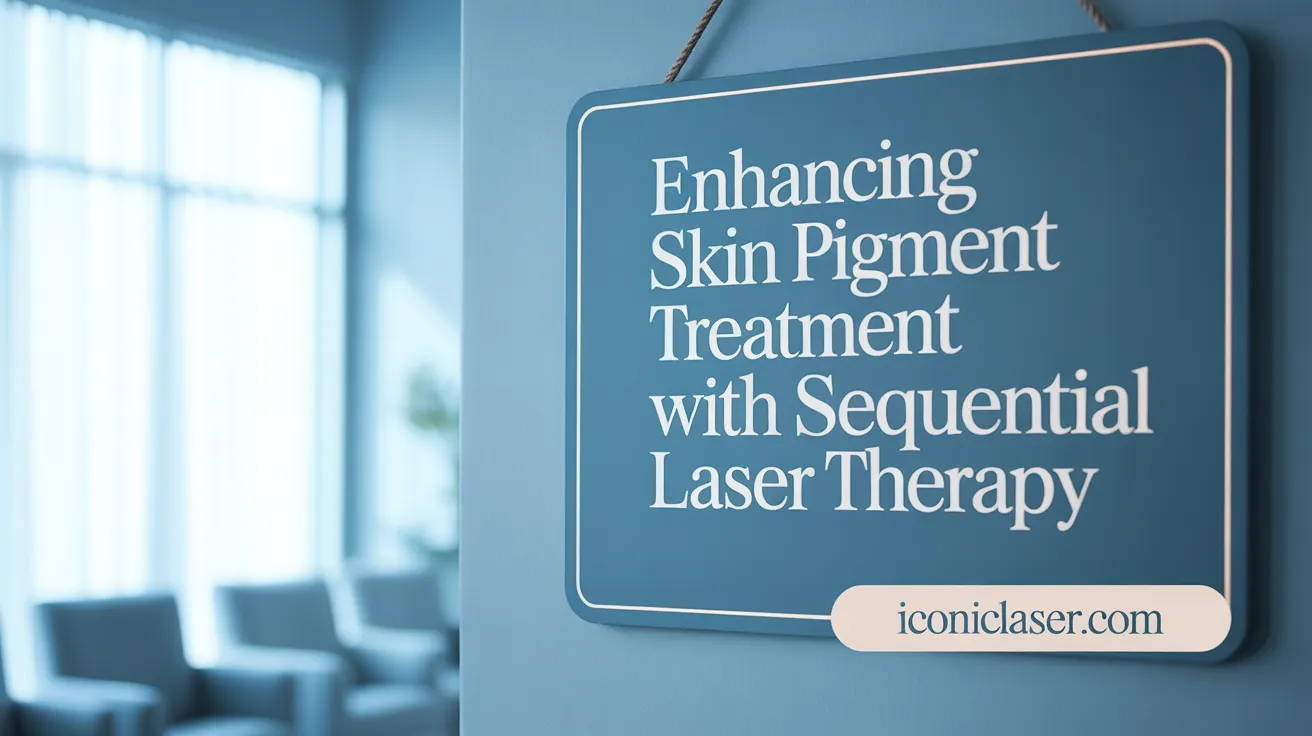
Use of combinations of laser wavelengths in dermal pigmentation
Sequential laser therapy often involves combining different laser wavelengths, such as IPL and Q-switched or picosecond lasers, to target various types of dermal pigmentation more effectively. This approach allows for a tailored treatment protocol that addresses both superficial and deeper pigment deposits. For instance, IPL, with its broad-spectrum pulse, can provide modest improvements in epidermal melasma, while specific lasers like the alexandrite (755 nm) or Nd:YAG (1064 nm) target deeper dermal pigments. The synergy of these wavelengths enhances pigment clearance, reduces recurrence, and minimizes side effects.
Efficacy in Indian patients with various pigmentary disorders
A recent study involving 122 Indian patients with Fitzpatrick skin types III–IV demonstrated that sequential laser therapy is both safe and effective for managing dermal pigmentation. Patients presented with diverse pigmentary conditions, including tattoos, dermal/mixed melasma, acquired dermal hyperpigmentation, and dermal nevi. Results showed significant pigment reduction, with subjective improvement scores indicating high patient satisfaction. Proper parameter adjustment, longer intervals between sessions, and safety measures effectively minimized adverse effects like post-inflammatory hyperpigmentation.
Improvement scores across different lesion types
Patients experienced notable improvement across a variety of lesions. Physician assessments reported mean scores of 3.76 for nevi, 4.46 for tattoos, 3.81 for acquired dermal hyperpigmentation (ADMH), and 3.84 for melasma. Notably, melasma showed higher improvement scores than tattoos, which aligns with the depth and nature of pigmentation affecting treatment outcomes. Follow-up at six months confirmed sustained improvements, with most patients describing their skin as 'excellent' or 'good.' This evidence supports the effectiveness of sequential laser protocols tailored to specific pigmentation types.
Optimization of parameters to minimize side effects
Using appropriate laser parameters is crucial to reduce risks such as PIH, erythema, and transient hypopigmentation. Techniques include selecting the right wavelength, adjusting fluence, increasing intervals between sessions, and employing pre- and post-treatment care. Such precautions ensure high safety standards, especially in darker skin types. The clinical experience underscores that customizing laser settings according to pigment depth and skin response leads to effective outcomes while safeguarding patient safety.
| Treatment Modality | Targeted Pigmentation | Typical Wavelengths | Common Outcomes & Side Effects |
|---|---|---|---|
| IPL | Epidermal melasma | Broad spectrum | Modest improvement, recurrence, transient erythema |
| Q-switched lasers | Tattoos, superficial pigmented lesions | 694-755 nm | Significant pigment destruction, rebound hyperpigmentation in some cases |
| Picosecond lasers | Dermal pigmented lesions, tattoos | 755-1064 nm | Enhanced clearance, fewer side effects, fewer treatments |
This combination approach leverages the strengths of each laser type and wavelength, providing a comprehensive solution for challenging pigmentary disorders across diverse skin types.
Comparative Analysis: IPL Versus Alexandrite 755 nm Laser for Melasma and Dermal Pigmentation
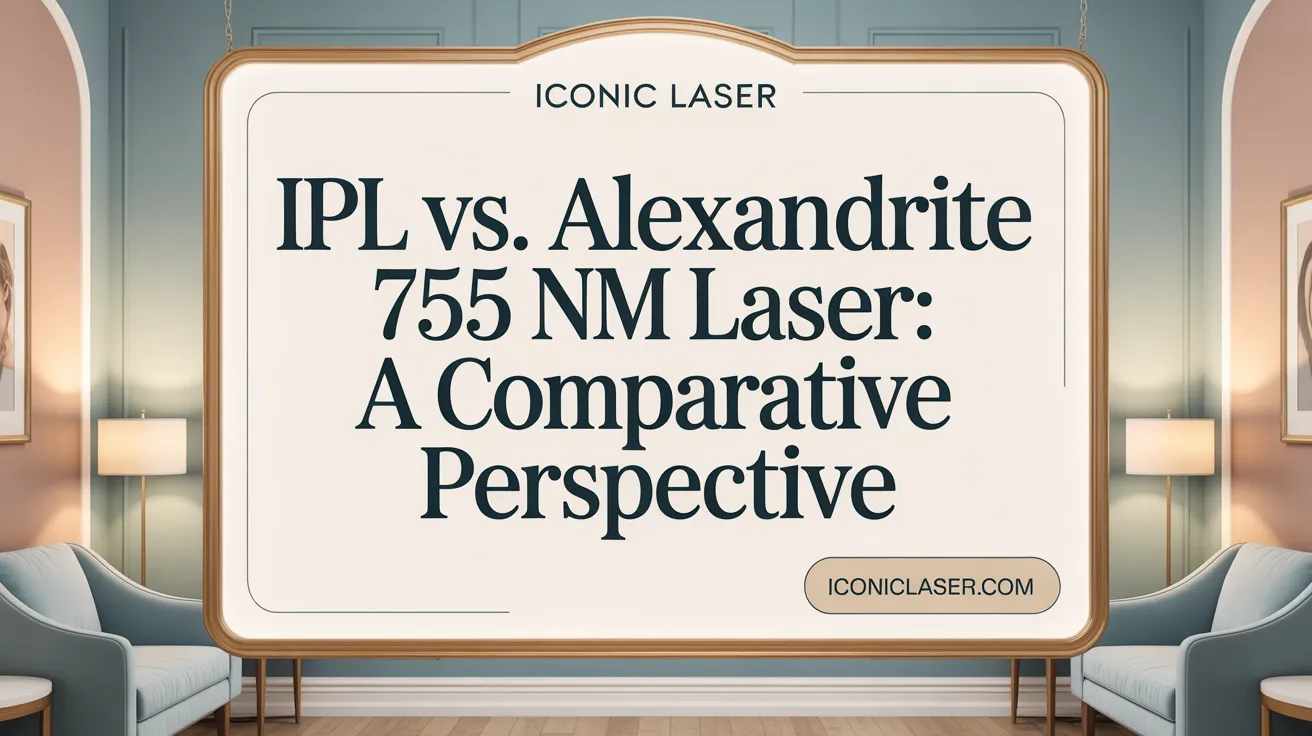
How effective are IPL and Alexandrite 755 nm laser in melasma treatment?
Both Intense Pulsed Light (IPL) therapy and the Alexandrite 755 nm laser have been used to target dermal pigmentation, including melasma. IPL delivers broad-spectrum light that modestly improves pigmentation but often shows recurrence, especially in epidermal melasma. It has been associated with a melanin index reduction of approximately 39.8%, but this improvement can diminish over time. Conversely, the Alexandrite 755 nm laser targets melanin with high precision, effectively reducing pigmentation in darker skin types, with multiple treatments often yielding significant, lasting results.
What improvement scores have been observed with each treatment?
Patients undergoing IPL usually report moderate improvements, with subjective assessments indicating only partial clearance and some recurrence. The Alexandrite laser, especially when enhanced with diffractive lens array (DLA), has demonstrated substantial improvements, with treatment of facial dyspigmentation showing significant, ongoing skin texture and tone enhancement. One study highlighted a considerable improvement in pigmentation, confirmed by clinical scoring systems, with scores reaching around 4.46 ± 0.71 for tattoos, indirectly reflecting laser effectiveness.
How about recurrence and long-term results?
Recurrence is a notable challenge for both modalities. IPL tends to have a higher rate of pigmentation relapse, especially in cases of epidermal melasma, with some patients experiencing recurrence within six months. The Alexandrite laser, however, tends to offer more durable outcomes, particularly when treatments are tailored to the pigmentation depth. Follow-up studies reveal sustained improvements up to 12 months post-treatment, although some recurrence may still occur.
What do research findings suggest when comparing IPL and Alexandrite laser?
Research indicates that while IPL can be effective for superficial pigmentation, its tendency for recurrence and modest efficacy in sun-damaged skin make it less ideal for long-term management of dermal hyperpigmentation. The Alexandrite laser, especially with advancements such as picosecond technology and DLA, shows more promising, durable results in treating darker skin types with a lower risk of adverse effects like post-inflammatory hyperpigmentation. Both treatments require multiple sessions, but Alexandrite laser treatments often lead to higher patient satisfaction due to better and lasting pigment clearance.
| Aspect | IPL Therapy | Alexandrite 755 nm Laser | Additional Details |
|---|---|---|---|
| Effectiveness | Modest, partial improvement | High, long-lasting improvements | IPL is less precise, variable results |
| Improvement Scores | Around 39.8% melanin reduction | High, with significant clinical score improvement | Scores depend on pigmented condition |
| Recurrence | Frequently recurs within 6 months | Less recurrence, durable at up to 12 months | Recurrence influenced by pigmentation depth |
| Research Findings | Modest efficacy, risk of relapse | Superior efficacy, lower adverse effects | Best suited for specific pigmentation depths |
In summary, while both IPL and Alexandrite 755 nm laser can improve dermal pigmentation, the Alexandrite laser, particularly with recent technological enhancements, tends to offer superior and more persistent results, especially in darker skin types like Fitzpatrick III–IV.
Safety Profile and Side Effects of IPL and Alexandrite 755 Laser Treatments

What are the common side effects associated with pigmentation laser treatments?
Pigmentation laser treatments, including intense pulsed light (IPL) therapy and the Alexandrite 755 nm laser, are generally considered safe when performed correctly. Common side effects are typically mild and temporary. Patients often experience redness, erythema, and swelling immediately after treatment, which usually resolve within hours or days. Erythema, or redness, is especially common and reflects the skin's response to laser energy.
Transient hypopigmentation—a lightening of the skin—may also occur, especially in individuals with darker skin types. Although rare, some patients may experience hyperpigmentation or post-inflammatory hyperpigmentation (PIH), characterized by darker spots that can persist for weeks or months if not managed properly.
Incidence rates of post-inflammatory hyperpigmentation (PIH)
The occurrence of PIH varies depending on skin type, laser settings, and post-treatment care. Studies show that darker skin types (Fitzpatrick III–IV) have a higher predisposition for PIH, especially if laser parameters are not carefully adjusted. In controlled settings, the incidence of PIH remains low, particularly when appropriate laser doses are used, and protective measures are taken.
Strategies to mitigate adverse events
To minimize side effects, practitioners tailor laser parameters such as fluence (energy level) and pulse duration according to individual skin type and pigment depth. Using longer intervals between sessions allows the skin to recover fully, reducing the risk of PIH.
Pre- and post-treatment care is crucial. Patients are advised to avoid sun exposure, use broad-spectrum sunscreens, and adhere to topical bleaching or corticosteroid regimens if recommended. Proper cooling during laser treatment also helps protect the skin and lessen erythema.
Monitoring treatment progress and adjusting settings as needed can prevent overexposure and adverse outcomes. Maintaining the balance between efficacy and safety is essential, particularly for patients with darker skin tones.
Long-term safety considerations
Long-term safety studies indicate that when performed with proper protocols, laser treatments offer sustainable results with minimal long-lasting adverse effects. Nevertheless, some risks, like persistent hypopigmentation or scarring, although rare, highlight the importance of professional expertise.
Patients should undergo thorough assessment before treatment, and clinicians should follow evidence-based guidelines to ensure safety. Continuous follow-up helps detect and manage any delayed side effects, ensuring the overall safety and satisfaction of procedures involving IPL and Alexandrite laser systems.
| Side Effect | Common in | Management Strategies | Notes |
|---|---|---|---|
| Redness and erythema | All skin types, especially darker tones | Cooling, topical anti-inflammatory agents | Usually resolves within hours to days |
| Transient hypopigmentation | Darker skin types | Adjust laser fluence, protect from sun | Usually reversible |
| Post-inflammatory hyperpigmentation (PIH) | Dark skin, high fluence settings | Pre-conditioning, sun protection | Effective preventative measures reduce incidence |
| Erythema and swelling | All skin types | Cooling, anti-inflammatory creams | Transient, resolves quickly |
Overall, understanding and managing these side effects contribute to the safe use of IPL and Alexandrite 755 nm lasers in pigment correction.
Laser Treatment Outcomes in Pigmented Lesions Beyond Melasma: Tattoos, Nevi, and Dermal Hyperpigmentation
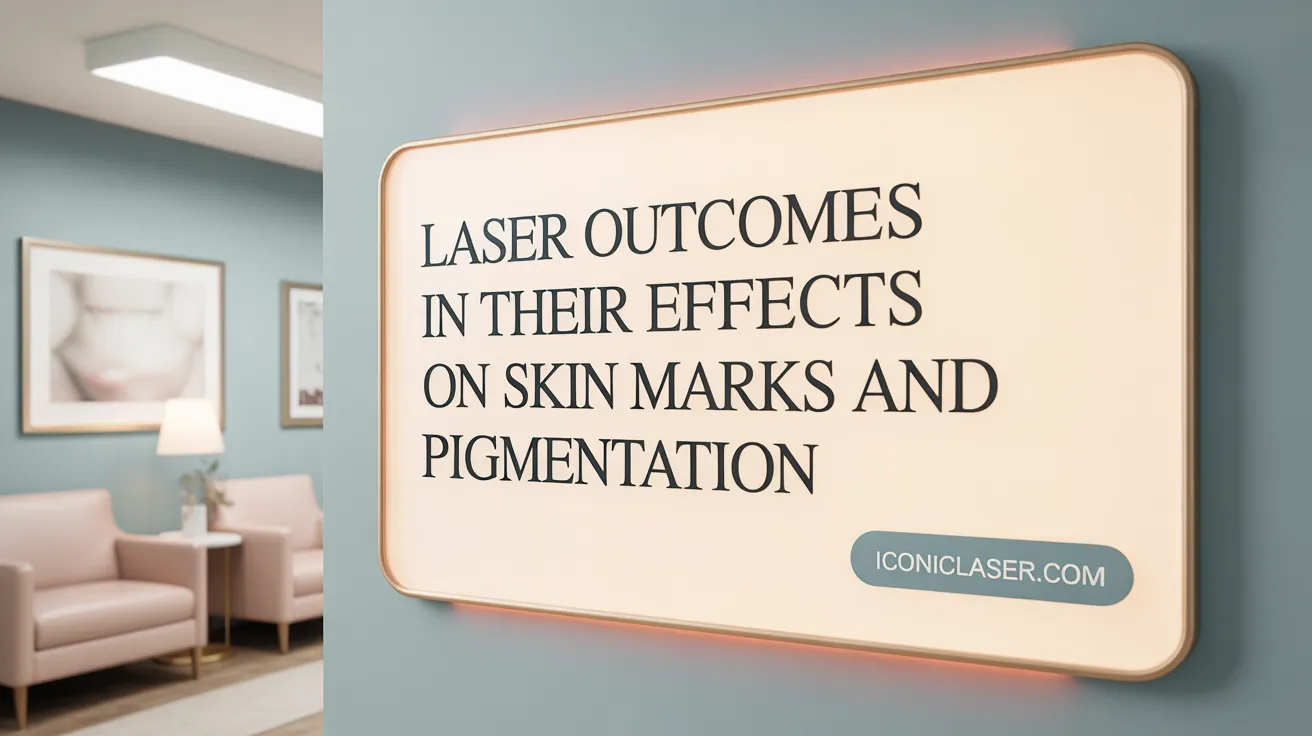
How effective is laser treatment for pigmentation?
Laser therapy, especially sequential laser protocols using specific combinations, has proven to be both safe and effective for managing various pigmented skin conditions. In a study involving 122 Indian patients with Fitzpatrick skin types III–IV, significant reduction in dermal hyperpigmentation was observed across different conditions, including tattoos, nevi, and acquired dermal hyperpigmentation.
Patients' subjective assessments reflected high satisfaction levels. The mean physician evaluation scores were notably positive: 3.76 ± 1.30 for nevi, 4.46 ± 0.71 for tattoos, 3.81 ± 1.33 for acquired dermal melanoses (ADMH), and 3.84 ± 1.07 for melasma. These scores indicate tangible improvements, with physicians noting marked improvements especially in tattoos and nevi.
Variations in response based on lesion type
The effectiveness of laser treatments varies by the type of pigmentary condition. For instance, tattoos often respond very well to laser therapy, showing a mean assessment score of 4.46 out of 5, reflecting substantial aesthetic improvement. Nevi and ADMH also exhibit notable responses, although the extent can differ based on lesion depth and composition.
Statistical analysis of the data revealed a significant difference in the mean improvement scores across different pigmentary disorders (F = 3.39, p = 0.02). Specifically, melasma showed higher scores than tattoos (p = 0.03), indicating that certain conditions may respond better to laser treatment. Despite the differences, overall patient satisfaction remained high, with many reporting "excellent" or "good" improvements at 6-month follow-ups.
Sustained improvements at 6 months follow-up
Follow-up evaluations conducted six months after treatment confirmed the durability of the results. Patients particularly noted sustained improvements in tattoos and dermal pigmentation. Most reported a lasting positive impact on the skin’s appearance, with few cases showing recurrence or worsening.
These outcomes support the clinical experience that tailored sequential laser protocols, when properly adjusted for specific pigment types, can produce lasting results. Proper pre- and post-treatment care, along with optimized laser parameters, help minimize adverse effects such as post-inflammatory hyperpigmentation (PIH) and transient erythema.
This evidence suggests that combining laser therapy with standard topical treatments and protective measures forms a promising approach for managing complex pigmented skin conditions, especially in darker skin types where recurrence risks are higher. Further research with more objective measures could enhance understanding of long-term benefits.
Durability and Recurrence: Long-Term Efficacy of IPL and Alexandrite Laser Treatments
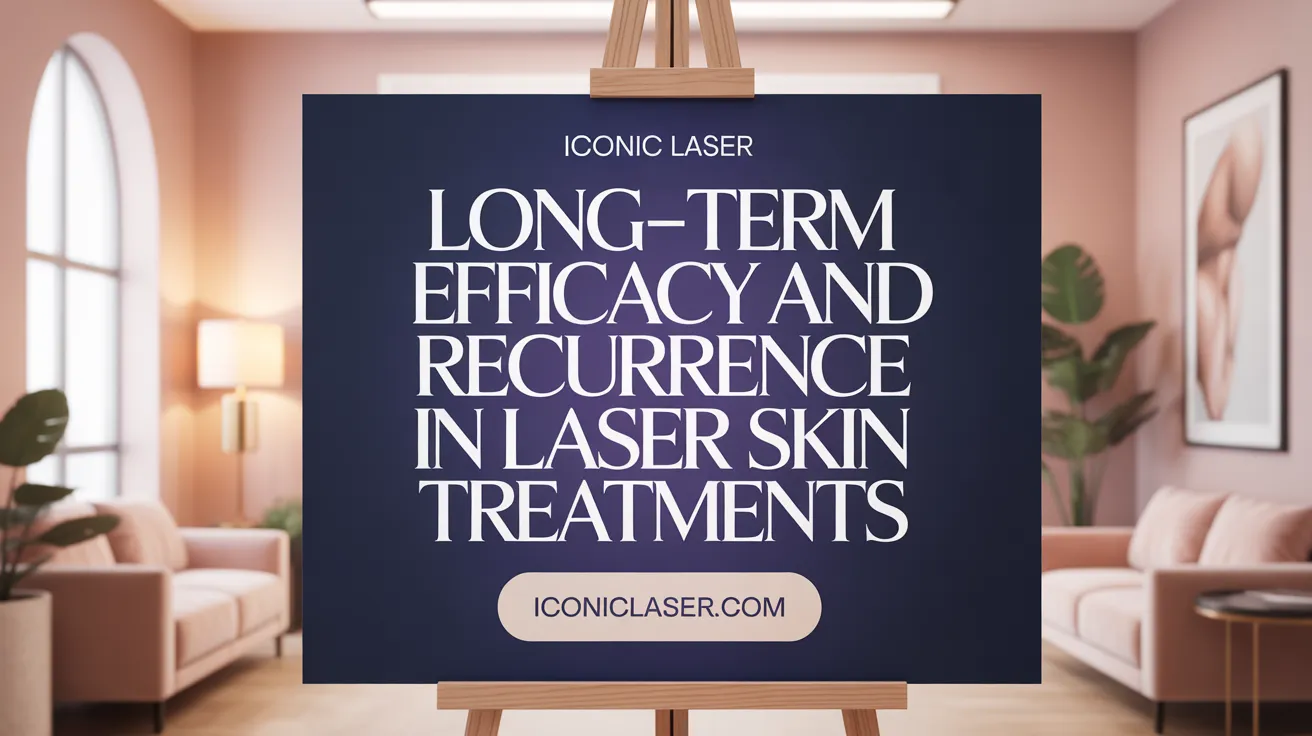
What are the recurrence rates after IPL and Alexandrite laser interventions?
Both IPL and Alexandrite lasers have shown varying degrees of recurrence in treating dermal pigmentation. IPL therapy often yields modest improvements, with some patients experiencing recurrence within several months, especially in conditions like melasma. Recurrence rates can vary, but factors such as ongoing UV exposure and hormonal influences often contribute.
In contrast, picosecond Alexandrite lasers demonstrate more durable results, with fewer cases of relapse observed in studies. These lasers target pigment structures more precisely and induce less collateral damage, which is associated with longer-lasting effects.
How long does pigmentation clearance last after treatment?
The duration of clearance depends on the condition, the treatment modality, and individual patient factors. IPL treatments typically require maintenance sessions every 6 to 12 months due to some degree of recurrence.
For Alexandrite picosecond laser treatments, initial improvements can last from 6 months up to a year or more, with some studies indicating sustained results at 12 months follow-up. The increased durability is attributed to the laser’s ability to target deeper pigment deposits more effectively.
What strategies help maintain treatment outcomes and reduce relapse?
Maintaining optimal skin care post-treatment is essential. Regular use of broad-spectrum sunscreens, avoidance of further UV exposure, and topical agents like hydroquinone can help prevent pigment reaccumulation.
For patients undergoing IPL therapy, scheduled refresher sessions and strict photo protection are recommended. In cases treated with Alexandrite lasers, follow-up treatments or combined therapies may enhance long-term outcomes.
Are there studies noting relapse timelines in melasma and other pigmented conditions?
Research indicates that melasma frequently recurs within 3–6 months after laser or IPL interventions if the underlying triggers are not addressed. The study by Wang et al. (2004) highlights a 39.8% melanin index reduction with IPL, but recurrence was observed over time without ongoing care.
Similarly, for tattoos and dermal nevi, laser removal results are usually durable, but some pigment may reappear, especially if sun protection is inadequate. Reports on picosecond lasers suggest that with rigorous follow-up, relapse can be minimized, with some patients maintaining near-complete clearance for over a year.
| Treatment Type | Typical Recurrence Timeline | Notes |
|---|---|---|
| IPL | 6 months to 1 year | Recurrence linked to sun exposure |
| Alexandrite picosecond | 12 months or more | Longer-lasting, fewer relapses |
| Traditional Q-switched Lasers | 3-6 months | Higher rebound hyperpigmentation |
Is laser treatment for hyperpigmentation permanent?
Laser treatments provide effective, long-lasting pigment reduction, especially for superficial lesions. However, they are not guaranteed to be permanent. Recurrence can occur if skin is repeatedly exposed to factors that trigger pigmentation, such as sun, hormonal changes, or inflammation.
Maintaining benefits involves ongoing sun protection, lifestyle modifications, and sometimes supplementary topical therapies. While picosecond Alexandrite lasers show promise for prolonged results with lower relapse rates, continuous skin care is essential for sustaining improvements.
Advantages of Picosecond Alexandrite Laser in Pigmentation Management for Darker Skin
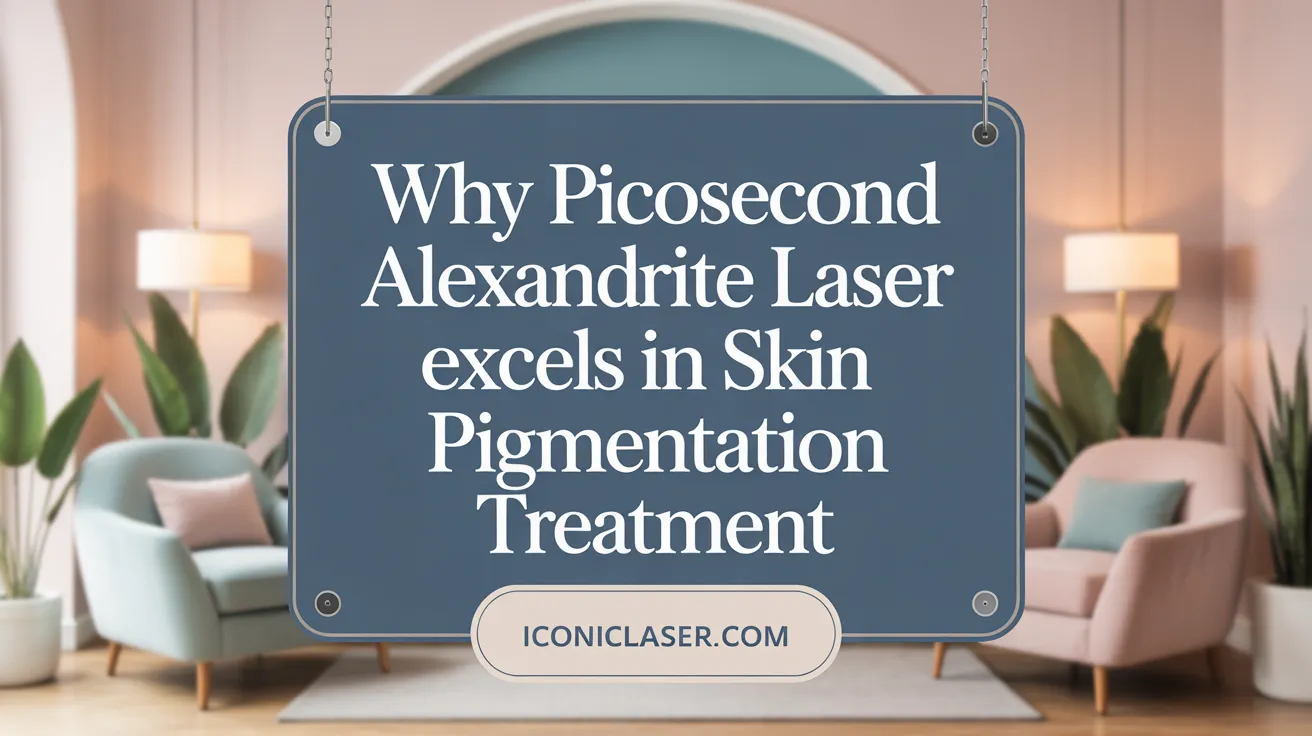
What is the most effective laser for treating pigmentation, especially for darker skin types?
The picosecond Alexandrite laser stands out as a highly effective and safer option for managing pigmentation in darker skin. Its ultrashort pulse duration, typically in the 750 picoseconds range, allows for targeted fragmentation of melanin with minimal thermal damage to surrounding tissues. This precision reduces the risk of post-inflammatory hyperpigmentation (PIH), a common concern with traditional lasers.
This laser uses photomechanical effects, creating laser-induced optical breakdown that produces vacuolated structures in pigmented lesions. These structures shed over time, effectively reducing visible pigmentation. Simultaneously, the laser stimulates collagen production, leading to improvements in skin texture and overall skin quality.
How does the laser work through photoacoustic mechanisms?
Unlike traditional longer-pulse lasers that deliver heat, picosecond lasers generate photoacoustic waves that shatter pigment particles through mechanical stress. This process minimizes heat absorption, making it especially suitable for skin of color where thermal damage and pigmentary changes are more common.
Why is it considered to have a lower risk of PIH?
Compared to Q-switched lasers, which often cause rebound hyperpigmentation in darker skin, picosecond lasers produce fewer side effects. Studies have shown no significant PIH development post-treatment, highlighting its safety profile for Fitzpatrick skin types III-IV.
Why is it suitable for skin of color?
The laser's ability to target melanin specifically while sparing the surrounding skin makes it ideal for pigmented skin types. Its effectiveness in clearing pigmentation and improving skin texture with fewer sessions and minimal risk factors supports its use in diverse populations.
How does it improve skin texture?
Apart from pigment reduction, the collagen-stimulating effect results from controlled laser-induced breakdown. This promotes dermal remodeling, resulting in smoother, more youthful skin. Patients often notice improved skin tone and decreased irregularities after a series of sessions.
| Feature | Benefits | Additional Notes |
|---|---|---|
| Photoacoustic mechanism | Precise pigment targeting | Creates mechanical stress without thermal damage |
| Collagen stimulation | Skin rejuvenation | Improves skin texture and elasticity |
| Low PIH risk | Suitable for darker skin | Minimal unwanted pigmentation changes |
| Fewer sessions needed | Efficient treatment | Over 75% clearance often seen after 6 treatments |
| Safety in skin of color | Lower side effect profile | Well tolerated with transient erythema and edema |
In summary, the picosecond Alexandrite laser combines advanced photomechanical action with a lower side effect profile, making it an excellent choice for pigmentation management in darker skin tones. Its ability to deliver effective treatment while maintaining skin safety aligns with the evolving needs of pigmentation therapy for diverse patient populations.
Role of Q-Switched Lasers and Limitations in Melasma Treatment
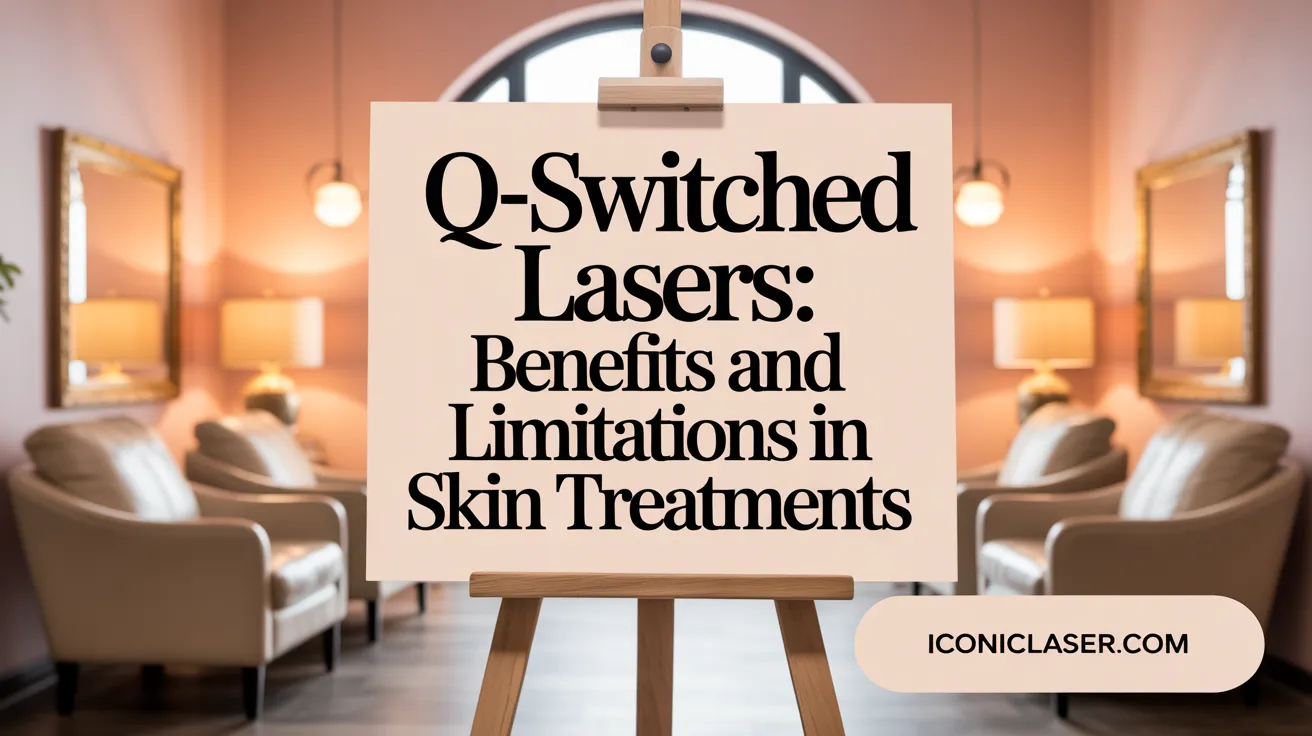
Efficacy of Q-switched Nd:YAG and Alexandrite lasers
Q-switched lasers, particularly Nd:YAG and alexandrite systems, are commonly used for targeting pigmented skin lesions and tattoos. These lasers emit ultra-short pulses in the nanosecond range, which effectively disrupt melanosomes and tattoo ink particles with high precision. They are often chosen for their ability to treat various pigmented lesions, including nevus of Ota, freckles, and lentigines, especially in skin types that are prone to hyperpigmentation.
High recurrence rates with traditional fluence levels
Despite their effectiveness, traditional high-fluence Q-switched laser treatments for conditions like melasma and tattoos have shown disappointing results due to significant rebound hyperpigmentation and lesion recurrence. Studies indicate recurrence rates can range from 64% to 81% within three months post-treatment, limiting long-term success.
Adverse rebound hyperpigmentation risks
Rebound hyperpigmentation remains a major concern, particularly in darker skin types. It happens when laser treatment induces excessive pigment production or inflammation, leading to darker patches reemerging after initially successful treatment. Managing this risk involves careful patient selection, appropriate laser parameters, and vigilant post-treatment care.
Low-fluence protocols and outcomes
To mitigate adverse effects and recurrence, newer approaches utilize low-fluence or subthermolytic protocols. These methods apply gentler laser settings, aiming to reduce inflammation and pigmentary disturbances. Although they show promise—achieving around 92.5% lightness improvement and significant MASI score reductions—they often require multiple sessions and carry a persistent risk of recurrence. Nevertheless, they offer a safer alternative with fewer side effects, especially in patients with skin of color.
In summary, while Q-switched lasers are valuable tools for pigmentary and tattoo treatments, their role in melasma management is limited by high relapse rates and hyperpigmentation risks with traditional protocols. Emerging low-fluence strategies and personalized treatment plans are paving the way toward safer, more durable outcomes.
Integration of Laser Therapy with Topical Treatments and Protective Measures

Combining laser protocols with topical agents such as hydroquinone
Laser treatments for dermal pigmentation often deliver the best results when combined with topical agents. Hydroquinone, a popular skin-lightening agent, is frequently used alongside laser therapy to enhance pigment reduction. Studies have shown that combining these modalities can accelerate the fading of pigmented lesions such as melasma and tattoos. For example, laser sessions can target deeper pigment, while hydroquinone helps lighten superficial pigmentation, leading to more uniform skin tone.
Importance of sun protection and skincare
Sun protection is critical before, during, and after laser treatments. Exposure to ultraviolet radiation can trigger post-inflammatory hyperpigmentation (PIH), especially in darker skin types. Using broad-spectrum sunscreens with high SPF, wearing protective clothing, and avoiding peak sunlight hours help minimize these risks. Proper skincare, including gentle cleansing and moisturizing, also supports healing processes and prevents adverse reactions.
Pre- and post-treatment care to optimize safety
Before laser procedures, patients should avoid sun exposure and discontinue certain skin products that may increase photosensitivity. Post-treatment, continuing sun protection is essential to prevent PIH and hypopigmentation. Patients are often advised to use soothing creams, avoid abrasive skin practices, and follow specific care instructions provided by their clinician. These measures significantly reduce side effects and enhance treatment outcomes.
Enhancing pigment correction outcomes
Tailoring treatment plans to individual skin types and pigment conditions fosters better results. Sequential laser protocols, combined with topical agents, maximize pigment clearance while minimizing side effects. Additionally, longer intervals between sessions allow the skin to recover, reducing the risk of adverse effects such as erythema and PIH. Incorporating protective measures and skincare routines focused on skin barrier reinforcement further improve the overall success of pigment correction strategies.
Clinical Parameters and Treatment Protocols Influencing IPL and Alexandrite Laser Success
How do fluence, spot size, and pulse duration adjustments impact treatment outcomes?
Treatment efficacy with IPL and Alexandrite lasers heavily depends on optimizing laser parameters. Fluence, or energy density, needs to be calibrated carefully—higher fluences can increase effectiveness but also raise the risk of adverse effects like PIH. Spot size determines the area covered per pulse and influences penetration depth, with larger spots typically allowing deeper tissue targeting. Pulse duration—how long each laser pulse lasts—must match the specific lesion's depth and pigment type. Shorter pulses are effective for superficial epidermal lesions, while longer pulses are better for deeper dermal pigmentation.
What are the recommended treatment intervals and session counts?
For optimal results, treatments are usually spaced 4 to 6 weeks apart, allowing skin recovery and reducing complication risks. The number of sessions varies by lesion type: small vascular or pigmented lesions often require 1-3 sessions, whereas tattoo or extensive pigmented lesions might need 5-20 treatments. Consistent intervals and tailored session numbers lead to higher success rates and better cosmetic outcomes.
How is treatment customized according to lesion type and skin phototype?
Customization is essential, especially for darker skin types (Fitzpatrick III-IV), to minimize risks like PIH. For epidermal lesions like freckles, lower fluences with shorter pulse durations are preferred. For deeper dermal pigmentation, higher fluences or longer pulse durations help reach the pigment without damaging surrounding tissue. In tattoo removal, specific wavelengths target different ink colors, and parameters are adjusted to optimize ink fragmentation while avoiding skin injury.
What measures gauge patient tolerance and satisfaction?
Patient comfort and satisfaction are assessed through tolerance levels during therapy and subjective feedback post-treatment. Many patients report manageable discomfort, often likened to rubber band snapping sensations, with tolerability improved through cooling techniques. Satisfaction is measured via visual improvement, often scored clinically, and patient-reported outcomes indicating 'good' or 'excellent' improvement. Keeping side effects minimal enhances overall satisfaction.
| Parameter | Adjustment Strategy | Effect |
|---|---|---|
| Fluence | Increase cautiously based on skin type and lesion depth | Balances efficacy and side effect risk |
| Spot size | Larger spots for deeper lesions, smaller for superficial | Ensures precise targeting and safety |
| Pulse duration | Shorter for superficial, longer for deep pigmentation | Matches lesion depth to prevent damage |
| Treatment interval | 4-6 weeks | Allows skin recovery and reduces adverse effects |
| Session count | Based on lesion severity and response | Ensures complete pigment clearance |
By carefully adjusting these parameters, practitioners can improve treatment success rates, enhance patient satisfaction, and minimize adverse events, especially in skin types prone to pigmentation issues.
Emerging Laser Technologies and Comparative Performance in Pigment Correction
How do Picosecond Nd:YAG compare with Alexandrite lasers?
Picosecond lasers, particularly the Nd:YAG (1064 nm), have gained popularity for their high efficiency in treating pigmentary disorders such as melasma and tattoos. They operate via a photomechanical effect, breaking down pigment particles effectively while minimizing trauma and side effects. Studies have reported over 92.5% improvement in lightness index with these lasers, although they still face challenges with recurrence rates reaching 64-81% at three months.
In contrast, Alexandrite lasers (755 nm) are widely used for hair removal and pigmented lesions, demonstrating excellent results such as up to 95% hair reduction after multiple sessions. For pigmented lesions, Alexandrite lasers effectively target melanin, especially in lighter skin types, with FDA approval for various skin conditions. They also improve tattoo ink removal, particularly black, blue, and green pigments, with treatment protocols ranging from 5 to 20 sessions.
How effective are nonablative fractional lasers at 1550 nm and 1927 nm?
Nonablative fractional lasers at 1550 nm are effective in treating stubborn pigmentation, displaying comparable efficacy to topical therapies like triple combinations. They achieve about 50% recurrence at 6 months, but some patients report lasting benefits up to 12 months. The 1927-nm nonablative fractional laser (NAFL) shows promising durability, with improved skin texture and pigmentation maintained at 6-12 months post-treatment, though about 33% of cases experience recurrence.
These fractional lasers work by creating controlled microthermal zones that stimulate collagen production and pigment breakdown while avoiding significant epidermal damage, thus reducing the risk of side effects.
What about recurrence and side effects?
Recurrence remains a challenge across laser modalities, with rates varying from 33% to over 80% depending on the treatment type and skin condition. For example, picosecond Nd:YAG lasers show promising results but have notable recurrence rates, especially in melasma. Nonablative fractional lasers tend to have a recurrence window between 3 to 6 months.
Side effects are generally mild but can include transient erythema, PIH, hypopigmentation, and rarely, blistering or bacterial infection. The use of appropriate laser parameters, longer intervals between sessions, and pre- and post-treatment care helps minimize these adverse effects.
Use in challenging cases of recalcitrant pigmentation
For difficult or recurrent pigmentary conditions, combining laser modalities with standard topical treatments like hydroquinone or triple therapy can enhance outcomes. Picosecond lasers are particularly appealing for targeting resistant tattoos and nevus of Ota because of their effectiveness and fewer side effects.
Similarly, fractional lasers are useful in cases of post-inflammatory hyperpigmentation resistant to topical therapies, providing additional stimulation for collagen and pigmentation improvement. Overall, selecting the right laser type based on pigment location, depth, and skin type is crucial for optimal results.
| Laser Type | Wavelength | Effectiveness | Recurrence Rate | Notes |
|---|---|---|---|---|
| Picosecond Nd:YAG | 1064 nm | High in pigment breakdown | 64-81% at 3 months | Suitable for darker skin tones, tattoo removal |
| Alexandrite | 755 nm | Excellent for hair, pigment | Variable; up to 95% hair reduction | Effective for light skin, tattoos |
| Nonablative fractional at 1550 nm | 1550 nm | Moderate, collagen stimulation | About 50% at 6 months | Good for pigmentation, skin rejuvenation |
| Nonablative fractional at 1927 nm | 1927 nm | Longer-lasting results | 33% recurrence | Suitable for melasma and dyschromia |
This evolving landscape offers promising options for clinicians dealing with recalcitrant hyperpigmentation, emphasizing the importance of personalized treatment planning.
Patient Experience and Satisfaction with IPL and Alexandrite 755 nm Laser Treatments
How satisfied are patients with IPL and Alexandrite laser treatments?
Patients in various clinical studies have reported high satisfaction levels regarding pigmentation treatments. For instance, the treatment success rates for laser hair removal often exceed 90%, with many patients expressing overall happiness with the outcomes. Similarly, laser procedures targeting pigmented lesions like tattoos and age spots have demonstrated significant aesthetic improvements, leading to positive feedback and confidence boosts.
How is pain and discomfort managed during these treatments?
Pain management is an important aspect of patient satisfaction. Most treatments, including IPL and Alexandrite lasers, involve tolerable discomfort levels. Techniques such as skin cooling, topical anesthetics, and controlled pulse delivery help minimize discomfort. In studies, over 98% of patients reported that pain was tolerable, and side effects like redness or swelling typically resolve quickly.
What is the psychological and aesthetic impact of laser pigment treatments?
Patients often experience substantial psychological benefits following successful treatment. Clearing pigmented lesions or tattoos can significantly improve self-esteem and social confidence. Many patients describe their treatments as life-changing, especially when previous attempts at removal or correction had failed.
How do long-term patient feedback and follow-up results look?
Long-term follow-ups at 3 to 12 months generally show sustained satisfaction. Most patients rate the improvements as 'excellent' or 'good,' particularly in cases like tattoo removal or dermal pigmentation correction. While minor recurrence might occur, ongoing skin care and periodic treatments help maintain results. This positive feedback underscores the overall safety and effectiveness of laser therapies for pigment management.
Comprehensive Review of Side Effects Management and Risk Mitigation in Laser Pigmentation Treatment
What are the common side effects associated with pigmentation laser treatments?
Managing the side effects of laser pigmentation treatments involves a combination of techniques and clinical practices. Common adverse effects include post-inflammatory hyperpigmentation (PIH), erythema, transient hypopigmentation, and in some cases, edema or erythema.
To minimize these effects, clinicians carefully select laser parameters such as fluence (energy level), pulse duration, and spot size, tailoring them according to the patient's skin type and lesion depth. For darker skin types, where the risk of PIH is higher, longer intervals between sessions are recommended to allow skin recovery.
Proper pre- and post-treatment care also plays a vital role. This includes the use of topical bleaching agents or corticosteroids to reduce inflammation, strict sun protection measures to avoid UV-induced pigment changes, and patient education about avoiding skin trauma during healing periods.
Extended treatment intervals, typically 4-6 weeks, help in reducing cumulative skin trauma and allow the epidermis to recover, thereby reducing risks of hyperpigmentation and erythema.
Techniques to minimize PIH, erythema, hypopigmentation
Specific strategies include:
- Precise laser parameter adjustments for skin type and lesion depth
- Use of cooling devices during treatment to protect the epidermis
- Longer intervals between sessions, especially in skin of color
- Application of topical agents to control inflammation
- Adequate patient education on sun avoidance
Safe practice guidelines for darker skin types
For patients with Fitzpatrick skin types III-IV, practitioners should adopt conservative settings, including lower fluence and shorter pulse durations. They should also emphasize protective measures such as broad-spectrum sunscreens and avoid aggressive laser settings that could induce PIH.
Role of treatment spacing and parameter selection
Spacing treatments adequately allows the skin to heal and reduces the risk of hyperpigmentation. Optimal parameter selection involves using the lowest effective energy levels, appropriate wavelength choice—such as 1064 nm for deeper pigmentation—and considering the use of fractional or picosecond lasers which tend to have a better safety profile in skin of color.
Importance of clinician expertise and patient education
Experienced clinicians are better equipped to assess skin response and adjust treatment protocols accordingly. Educating patients about realistic expectations, post-treatment skin care, and sun protection significantly contributes to minimizing side effects and improving treatment outcomes.
| Aspect | Technique | Benefit | Additional Notes |
|---|---|---|---|
| Side effect reduction | Personalizing laser settings | Less epidermal damage | Based on skin type and lesion depth |
| Skin protection | Sun avoidance and topical agents | Prevents PIH | Especially in darker skin |
| Treatment scheduling | Proper intervals between sessions | Allows skin recovery | Usually 4-6 weeks |
| Patient education | Clear communication | Enhances compliance | Reduces trauma and hyperpigmentation |
Overall, careful planning, technique refinement, and patient involvement are essential to achieving effective results while safeguarding skin health, particularly in darker-skinned individuals.
Scientific Evidence Supporting IPL and Alexandrite Laser Treatments in Clinical Practice
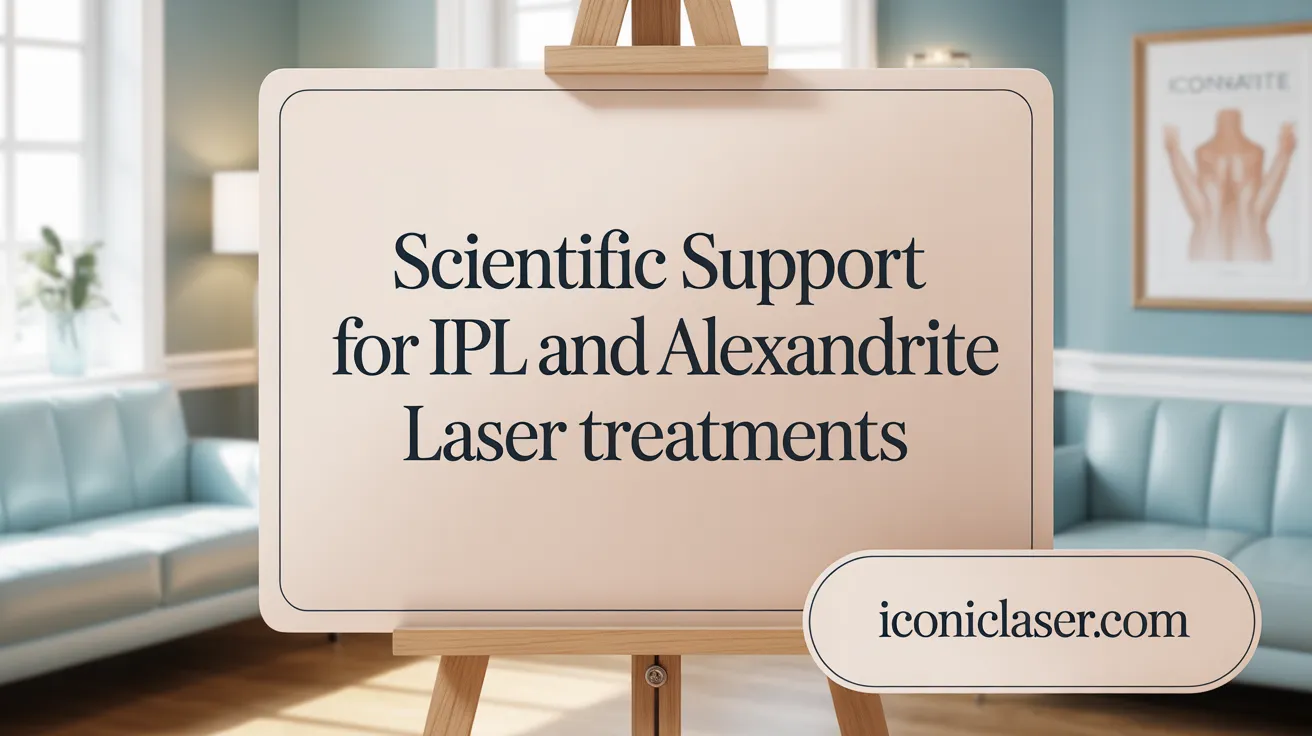
How effective is laser treatment for pigmentation?
Research shows that laser therapy, including intense pulsed light (IPL) and Alexandrite lasers, is quite effective in reducing various pigmented skin lesions. Multiple studies reveal significant improvements in pigmentation, often with high patient satisfaction.
In a recent clinical study involving Indian patients with Fitzpatrick skin types III–IV, sequential laser protocols improved dermal pigmentation, tattoos, and melasma, with a high safety profile. Patients reported notable subjective improvement scores across different conditions, such as a mean score of 4.46 for tattoos and 3.84 for melasma.
Statistical analysis underscores these positive outcomes. For example, a study examining various pigmentary conditions found a significant difference in mean improvement scores (F = 3.39, p = 0.02), with melasma showing higher gains than tattoos (p = 0.03). These results highlight that laser treatments can be effectively tailored to specific pigmentation issues.
In addition, follow-up assessments at six months demonstrated sustained improvement, with most patients describing their results as 'excellent' or 'good.' This durability underscores the efficacy of laser therapy over time.
Comparative data from other research supports these findings. For instance, QS lasers effectively target pigmented lesions by disrupting melanosomes, with treatment outcomes depending on the lesion type and depth.
While traditional Q-switched lasers showed disappointing results in some cases like melasma—due to high rebound hyperpigmentation—novel laser technologies such as picosecond systems and nonablative fractional lasers have shown promise with higher efficacy and fewer side effects.
Overall, the accumulated evidence consistently indicates that laser-based approaches are valuable tools for pigmentary disorder management, especially when personalized for patient skin type and condition.
Summarized data from major studies:
| Treatment Modality | Condition Treated | Efficacy Rate | Recurrence | Side Effects | Notes |
|---|---|---|---|---|---|
| IPL | Dermal hyperpigmentation | 39.8% melanin reduction vs. hydroquinone 11.6% | Moderate recurrence | Minor, transient | Effective for epidermal pigmentation |
| Q-switched Nd:YAG (1064 nm) | Melasma | 92.5% lightness index improvement | 64-81% at 3 months | Pigmentation changes | High recurrence, needs careful management |
| Nonablative fractional 1550 nm | Melasma | 50% recurrence at 6 months | Yes | Some lasting improvements up to 12 months | |
| Picosecond 755 nm | Pigment lesions | Over 75% clearance after a single session | Low | Minor erythema | Suitable for skin of color |
| Alexandrite 755 nm | Hair removal | Up to 95% hair reduction | Sustained | Temporary erythema | Particularly effective in light skin types |
Recommendations based on evidence
Clinical practice should incorporate laser protocols tailored to individual pigmented lesions and skin types. Combining laser treatment with proper topical therapies and protection can maximize results. Further research, especially with objective metrics, will refine these approaches and improve patient outcomes.
Future Directions and Research Needs in IPL and Alexandrite Laser Pigment Correction

Need for Objective Evaluation Methods
Current studies often rely on subjective assessments and scoring systems, which can introduce bias and variability. To enhance clinical reliability, future research should incorporate standardized, quantitative measurement tools such as melanin index assessments, high-resolution imaging, and spectrophotometry. These methods will help objectively evaluate treatment efficacy, facilitate comparisons, and improve personalized treatment plans.
Longer-term Randomized Controlled Trials
While initial results for IPL and Alexandrite lasers show promise, most studies focus on short-term outcomes. There is a significant need for longer-term randomized controlled trials that investigate the durability of results, recurrence rates, and long-term safety. Such data will guide clinicians in recommending optimal treatment intervals and maintenance strategies, especially for darker skin types prone to hyperpigmentation.
Optimization of Combined Treatment Protocols
Combining laser treatments with topical therapies or other modalities has shown potential in enhancing outcomes and minimizing side effects. Future studies should focus on fine-tuning protocols—determining the best sequence, timing, and combination of therapies. This will help establish standardized guidelines ensuring maximum efficacy with minimal adverse effects across diverse patient populations.
Innovations in Laser Technology for Pigmentation
Advances in laser technology, such as picosecond lasers with novel wavelength options, and fractional approaches, are expanding treatment possibilities. Upcoming innovations might include more selective, deeper-penetrating lasers with fewer side effects, customizable pulse durations, and real-time feedback controls. Continued research into these technological developments will ascertain their role in improving safety, efficacy, and patient satisfaction.
Summarizing IPL and Alexandrite 755 nm Laser Treatment Efficacy and Safety
IPL and Alexandrite 755 nm lasers represent two prominent modalities for pigment correction with distinct advantages. IPL offers a well-established, broad-spectrum light therapy that improves pigmentation with modest recurrence and favorable safety. The Alexandrite 755 nm laser, particularly in its picosecond form, excels in targeting pigmented lesions and tattoos with precise photomechanical effects, reduced risk of PIH, and sustained outcomes, especially important for darker skin types. Sequential and combination laser protocols tailored to lesion type and skin phototype optimize outcomes while minimizing side effects. Although laser therapy can provide durable pigment reduction, recurrence remains a challenge necessitating ongoing maintenance and sun protection. Scientific data support the efficacy and safety of both treatments, yet further research is needed to refine protocols and enhance long-term results. Ultimately, careful patient assessment, skilled technique, and appropriate follow-up help ensure effective and safe pigment correction with IPL and Alexandrite 755 nm lasers.
References
- Advancements in Laser Therapies for Dermal Hyperpigmentation in ...
- A review of laser and light therapy in melasma - ScienceDirect.com
- (PDF) Efficacy and safety of picosecond 755-nm alexandrite laser ...
- Laser Hair Removal - an overview | ScienceDirect Topics
- Efficacy and Safety of Alexandrite and Nd:YAG Laser Combination ...
- Standard guidelines of care: Lasers for tattoos and pigmented lesions
- Alexandrite Laser Treatment Explained - DermNet
